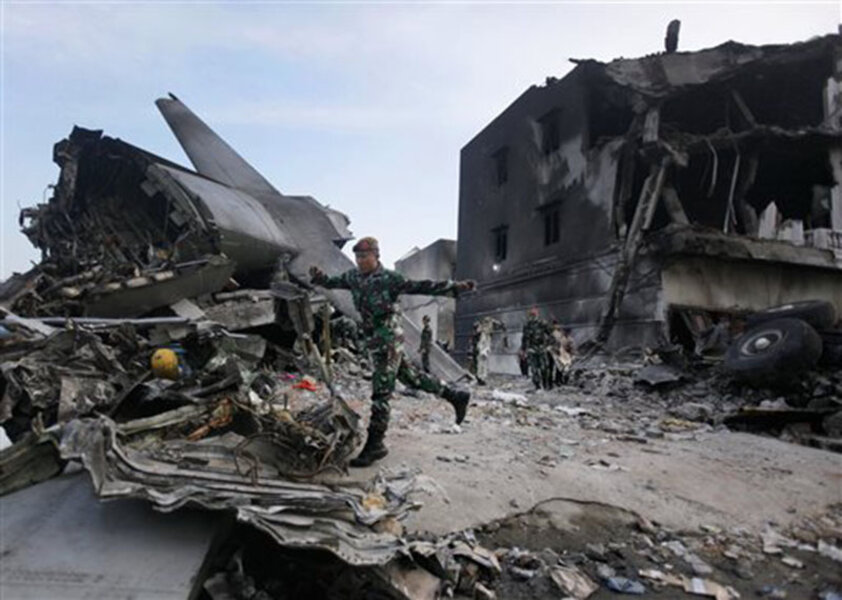Indonesia plane crash: Why was military flying civilian passengers?
Loading...
The number of casualties from Tuesday’s crash of an Indonesian air force transport plane in a busy residential area of Medan, Indonesia has reached 141.
“It was an old aircraft, already 50 years, but it was about to undergo a retrofit,” Indonesian vice president Jusuf Kalla said shortly after the tragedy.
The C-130 Hercules American-manufactured plane crashed just two minutes after takeoff, according to The Washington Post.
Capt. Sandhy Permana Alumni, the plane's pilot, radioed the control tower seconds before the crash, saying he needed to return to the airport because of engine trouble, according to the Associated Press.
There were no survivors on board and several dozen people on the ground were also killed.
Questions have arisen as to why authorities allowed anyone to fly the aging aircraft, let alone children and potentially paying passengers.
The AP reported many of those on board were relatives of military personnel. Family members can board air force flights for free with special permission. Hitching rides on military planes to reach remote destinations is common in Indonesia.
But Indonesia’s air force chief Air Marshal Agus Supriatna told reporters the crashed plane was only authorized to carry military personnel and their families, not paying passengers, according to the Associated Press. Supriatna said he would investigate allegations that passengers who paid to fly were allowed to board.
At first, the air force reported the plane only had 12 crew members when it crashed, according to The Washington Post. But Indonesian officials repeatedly raised the numbers of passengers, from five to 20 to 37 to its current tally of at least 141, fueling concerns about a lack of regulation and transparency.
Although there has been rampant speculation as to the quality of the aircraft, the exact cause of the crash is still unclear, according to The Washington Post.
“There are many possible causes,” military expert Susaningtyas Nefo Handayani Kertopati told the Jakarta Post. “Apart from the age of the airplane, human error could have caused the incident. It is possible that the pilot could not control either the field or the aircraft.”
“The accident serves as a red light for the military, which urgently needs to upgrade its equipment,” said Mahfudz Siddiq, the Indonesian Parliament’s Foreign Affairs Committee Chairman, on Tuesday.
President Joko Widodo said the government will evaluate the age of air force planes and other important military equipment, the AP reported.
Indonesia’s civil aviation safety record is so shaky the European Union barred Indonesian airlines from flying to Europe between 2007 and 2009. There have been five fatal crashes involving Indonesian air force planes since 2008, according to the Aviation Safety Network.
In September 2005, a Mandala Airlines Boeing 737 also crashed in Medan, killing 143 people.





